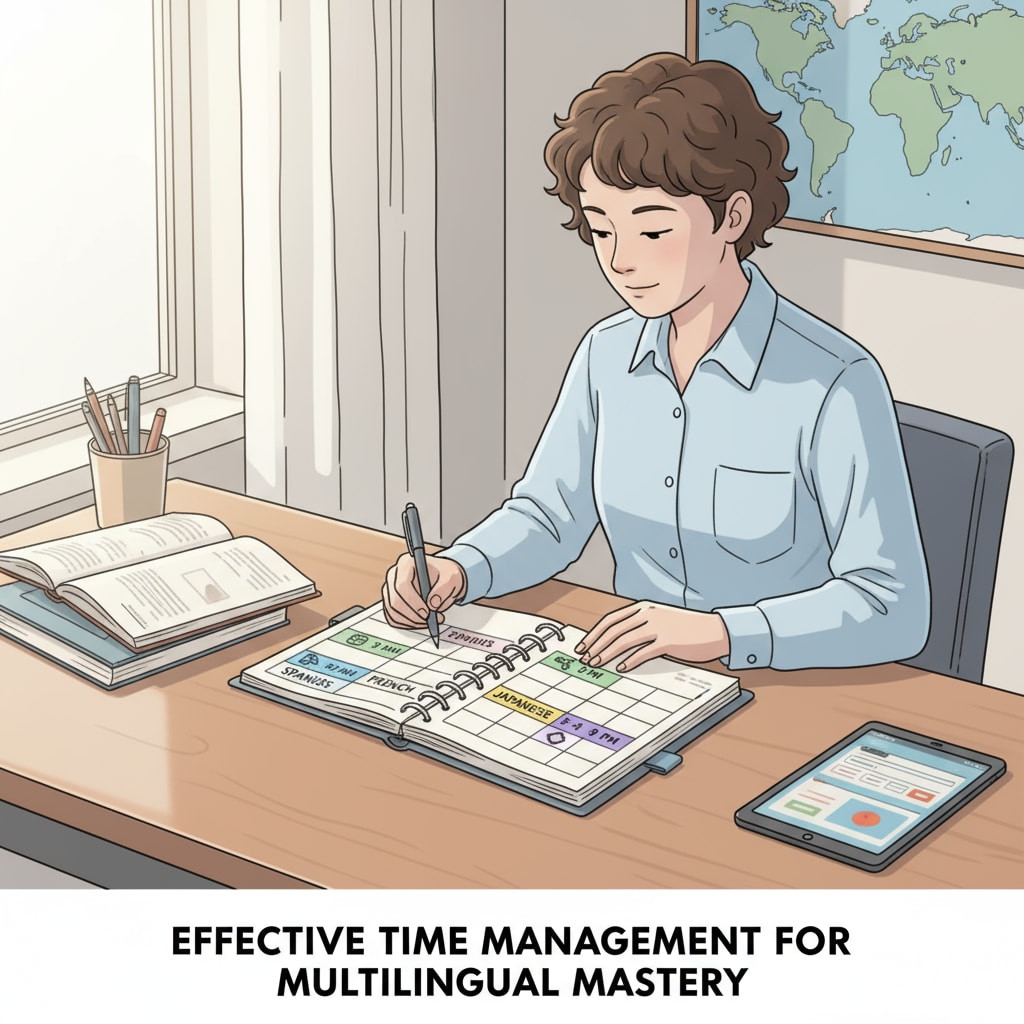Multilingual learning, language learning methods, and language prioritization are crucial aspects for those aiming to become proficient in multiple languages. The journey to becoming a multilingual is both rewarding and challenging. In this article, we will explore various strategies to make this journey more efficient and successful.

Time Management for Multilingual Learning
Effective time management is the cornerstone of successful multilingual learning. With limited time in a day, it’s essential to allocate specific time slots for each language. For example, you could dedicate an hour in the morning to one language and another hour in the evening to a different one. According to Learning Theory on Britannica, consistent practice over time is more beneficial than long, sporadic study sessions. By creating a structured schedule, you can ensure that you give adequate attention to each language you’re learning.

Choosing the Right Language Learning Methods
There are numerous language learning methods available, and choosing the right ones can significantly impact your progress. Some people prefer traditional classroom settings, while others thrive with online courses. Immersion is also a powerful method, where you surround yourself with the language, such as by traveling to a country where it’s spoken. Additionally, using language learning apps like Duolingo or Babbel can be a convenient way to practice regularly. As stated on Language Learning on Wikipedia, a combination of different methods often yields the best results.
Setting Language Priorities
Determining which languages to focus on first is a critical decision. Consider your goals; if you plan to work in a specific industry, languages relevant to that field should be prioritized. For instance, if you’re in the business world, languages like Mandarin, Spanish, or Arabic might be more valuable. Cultural interests also play a role. If you’re fascinated by Japanese culture, learning Japanese could be a top priority. By setting clear priorities, you can channel your energy and resources more effectively.
In conclusion, multilingual learning is an enriching experience. By implementing effective time management, choosing suitable language learning methods, and setting appropriate language priorities, you can take significant steps towards becoming a language master. Remember, every language learned opens up new opportunities and perspectives.
Readability guidance: We have used short paragraphs and lists to summarize key points. Each H2 section provides useful information in an organized manner. The passive语态 has been kept to a minimum, and long sentences are used sparingly. Transition words have been added throughout the article to enhance flow.


